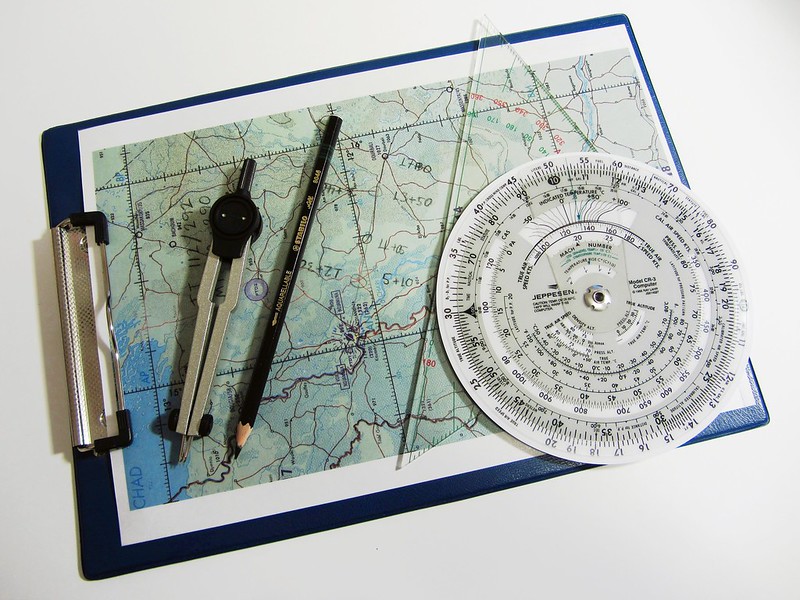Many people get lost while driving, taking into account the different signs and indications that exist so that this does not happen, but when a flight is made there is nothing on the outside to tell you the direction, or there is no place to park to check the direction properly; but how do pilots manage to fly from one place to another without getting lost?
The first flights were made with a compass and a map, the pilot had to distinguish places and reliefs from the heights and this system was advanced to such a way that the flights were planned making as they say a triangle where the clock, the map and the terrain were observed, from there a rule or norm began to be created which they called Visual Flight Rules (VFR).
But as time went by, the flights became more complex and people wished to go further, besides going through adverse weather phenomena, as well as flying at night, but many believe that those flights were made in a simple way, but it was not like that. As the requirements advanced and the problems grew, teams began to be built to help in the navigation, as well as to know the most accurate position of the aircraft.
For all this and to prevent accidents, ground equipment was created that allows the aircraft’s teams to know the exact position, direction and distance to a specific point, but as technology increased and space was conquered, the so-called GPS or Global Positioning System was created, which has significantly improved air navigation.
Flight planning
This stage of the flight is essential, since the beginning of aviation, it has been necessary to plan the flight due to the little autonomy that the aircrafts had, in addition to the few suitable places to land. Over time, aircraft have become much larger and autonomies much greater, but before a flight, it is still necessary to create a flight plan containing all the data required for the flight to be carried out effectively and efficiently, and not to create greater workloads for pilots at the time of navigation.
There are two types of flight
As we talked about before there are flight rules created to do as some imaginary ways or roads to prevent the collision of aircraft during flight, one of them is the VFR or visual flight rules, which is the basic flight of all types of pilots, is the flight with which you learn to fly and feel the aircraft, but it must follow rules to maintain safe separation between two aircraft, in addition, to never lose sight of the ground.
The other type of flight is the instrumental one, in this type of flight the rules of instrumental flight are followed, where only the information obtained from the instruments is followed, it is not possible to see through the windows or to follow the sensations or senses of the pilot, this is because in this flight the position of the aircraft is not known in a certain way unless one trusts the navigation instruments.
The first radio aid systems sent radio waves to the aircraft where an instrument indicated the direction of the aircraft with respect to that station, then improved giving the distance to this and to know the exact location can be made a triangulation with several ground stations thus achieving the exact location of the aircraft.
Also as we have talked before the Global Positioning System and the integration with the aeronautical charts now give a much more exact position, making the flight much easier, preventing the pilot from getting confused or lost.
How do you think pilots can get lost or disoriented nowadays?
If you have any doubt or question you can contact us or write your query in the comments section below.
Image of Johan via Pixabay.com under creative commons license
